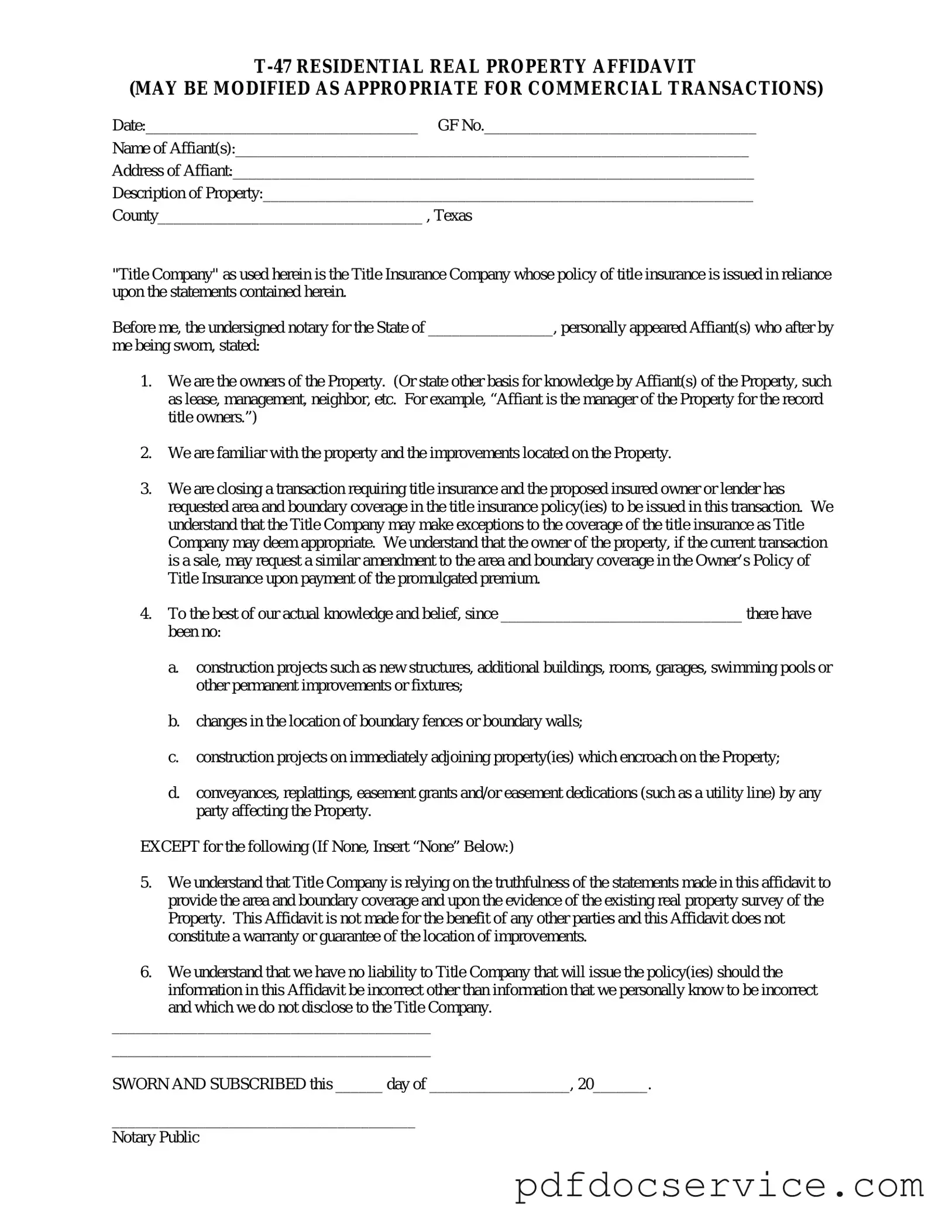The Texas residential property affidavit T-47 form plays a crucial role in real estate transactions within the state, particularly when it comes to clarifying the status of property ownership and the details surrounding it. This form is typically utilized by sellers to provide essential information about the property, including any changes in ownership and the nature of the property rights. By completing the T-47, sellers affirm that they are the rightful owners and disclose any existing easements or encroachments that may affect the property. The affidavit serves as a protective measure for both buyers and lenders, ensuring transparency and mitigating the risk of future disputes. Additionally, it is often required by title companies during the closing process, making it a key document for anyone involved in the sale or transfer of residential real estate in Texas. Understanding the nuances of the T-47 form is vital for both buyers and sellers, as it impacts the overall transaction and the legal standing of the property in question.
